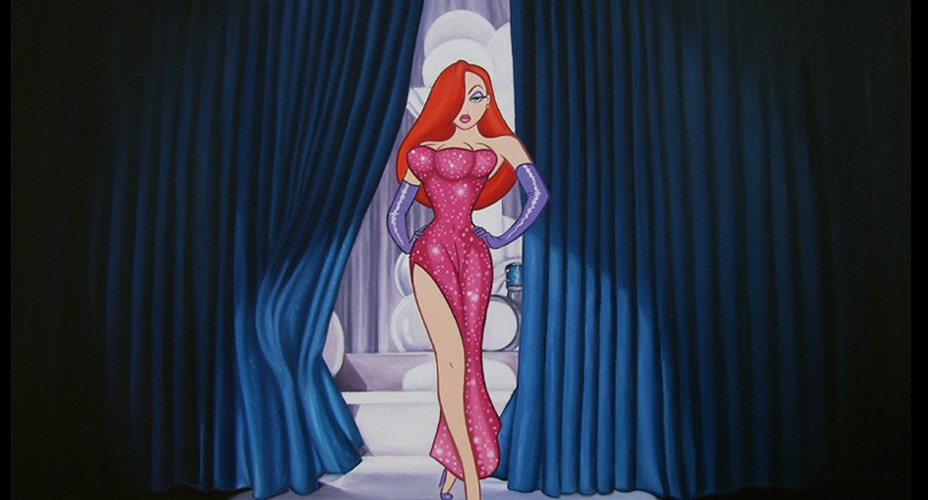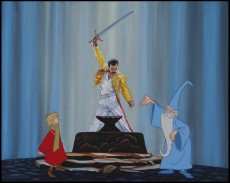 Mexican artist Jose Rodolfo Loaiza Ontiveros layers a wicked sense of humor atop a unique take on pop culture in his Disasterland and DisHollywood series. The lovingly rendered and exacting reproductions of classic Disney aesthetics-with-a-twist invert the old and invent new, often tabloid-informed but always wildly inappropriate and highly compromising scenarios.
Mexican artist Jose Rodolfo Loaiza Ontiveros layers a wicked sense of humor atop a unique take on pop culture in his Disasterland and DisHollywood series. The lovingly rendered and exacting reproductions of classic Disney aesthetics-with-a-twist invert the old and invent new, often tabloid-informed but always wildly inappropriate and highly compromising scenarios.
The viewer experiences a sensation almost akin to Schadenfreude when witnessing the sullying of a beloved American icon of bygone innocence and the subversion of this myth. But, the reality exposed is deliciously undeniable. And, while there is something to be said for the artist’s uniquely Mexican take on Americanization, it is conversely the subject of universality that preoccupies Ontiveros – namely, the universal 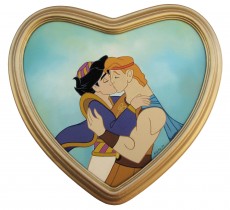 language of art, including the rhetoric of Disney.
language of art, including the rhetoric of Disney.
Kid-in spoke with Ontiveros about the international power of American pop culture and the enabling capacity of all art forms toward a global discourse. It should come as no surprise that, along the way, the terms tribute and parody sometimes seem interchangeable.
Where did you grow up and what was your childhood like?
I grew up in the northwestern part of México, in Mazatlán, Sinaloa. My childhood was good, I grew up with my parents and my older sister of 1 year, with whom I used to play and have a lot of fun.
Do you come from an artistic family?
No. Nobody in my family is connected to the art world.
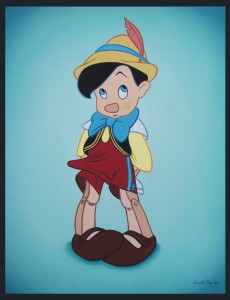 From where in your childhood does your rather particular sense of humor derives?
From where in your childhood does your rather particular sense of humor derives?
Maybe it is a result of my temperament. Since I was a child I wanted to be different – do the opposite of everyone. I styled my hair in a very strange way, I decorated my jeans with drawing charcoals, and I painted my shoes with intense colors. I did this more to express myself and feel unique than to draw attention to myself.
How did you discover fine art?
I had no familiar reference that connected or guided me in art. I discovered art in the same way you find out that you have feet and eventually one day walk: I found a pencil and I started to draw everything I saw. Since then I haven’t stopped doing it.
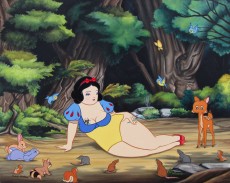 What were some of your favorite childhood books/illustrations that might have informed your current work?
What were some of your favorite childhood books/illustrations that might have informed your current work?
I had no children’s books and the strongest image I have is of a tablemat with a scene from “Snow White and the Seven Dwarfs.” These were used on special occasions then locked in a cabinet, but I always found a way to get the key. I remember staring at them for hours. They seemed to have an overwhelming beauty. I think that influenced the aesthetic I would later develop. I also remember two images in an encyclopedia, whose author I would later discover was Goya, which I found impressive and disturbing at the same time: Saturn Devouring his Son and The Colossus, from his Black paintings
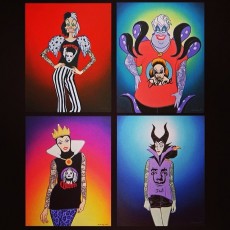 What was the impact of Walt Disney on your childhood, your budding skills as an artist?
What was the impact of Walt Disney on your childhood, your budding skills as an artist?
The work of Disney was my first visual school; the background watercolors, the balance of the colors and the outline of the characters impressed me a lot. My school notebook was filled with Disney characters. I tried to imitate the style. All of this definitely informs my development as an artist.
Where did you actually study and was it a natural evolution to illustration?
I studied Graphic Design in “Instituto Tecnológico Superior de Sinaloa” (ITESUS), and I took some painting and sculpting workshops in “Centro Municipal de las Artes” (CMA). Illustration 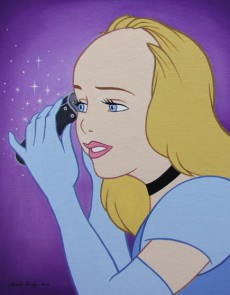 came as a consequence of my love of painting and drawing.
came as a consequence of my love of painting and drawing.
Describe the influence of US popular culture on your childhood.
I spent my childhood in México, but the influence of marketing from the US on our country is undeniable. Children from my generation grew up with Coca Cola bottles on the family table. We all wanted a trendy cartoon character as a piñata on our birthdays (I had Mickey Mouse) and everybody wanted Teenage Ninja Turtles shirts or tennis shoes. We had no idea where all this came from, we only enjoyed it. Later I discovered that I could use such influences to develop a universal language to communicate my ideas around the world. I grew up watching cartoons –some from Japan but the majority from the US. It does influence you. For example, I discovered Cat’s Lair from the Thunder Cats before the Greek Parthenon, Mazinger Z before Michelangelo’s David or She-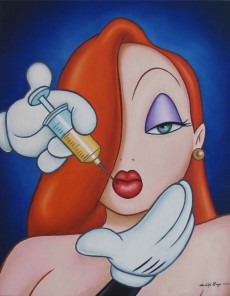 ra before Botticelli’s Venus. I don’t deny these influences but I’m also passionate about the history of universal art. Greek sculpture, Italian Baroque or Spanish paintings have influenced other stages of my work. México has a great cultural legacy and in some of my paintings I have paid tribute to artists such as Frida Kahlo. I feel fortunate to live in a period where artists have the freedom to feel global. I believe it is not necessary to label our influences with the name of a certain country. The language of art is universal.
ra before Botticelli’s Venus. I don’t deny these influences but I’m also passionate about the history of universal art. Greek sculpture, Italian Baroque or Spanish paintings have influenced other stages of my work. México has a great cultural legacy and in some of my paintings I have paid tribute to artists such as Frida Kahlo. I feel fortunate to live in a period where artists have the freedom to feel global. I believe it is not necessary to label our influences with the name of a certain country. The language of art is universal.
What else, or who else really impacted you as an artist?
I loved the works of William Bouguereau, the great masters of the Renaissance, Dali and Magritte’s Surrealism, Alphonse Mucha’s Art Nouveau and of course the work of Pop artists Lichtenstein, Rauschenberg and Warhol. Also, Banksy’s Street Art and Mark Ryden’s Lowbrow.
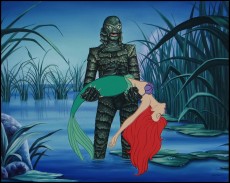 Speaking again of the subject of your most current series, and with the awareness that Walt Disney is held up to close inspection by feminist and Post Colonial theorists alike, what are your views on Disney?
Speaking again of the subject of your most current series, and with the awareness that Walt Disney is held up to close inspection by feminist and Post Colonial theorists alike, what are your views on Disney?
In my opinion, Walter Elias Disney was a visionary – one of the cleverest people in the entertainment industry. His biography is very interesting. I think that the greatest people are surrounded by a lot of controversy, although I personally think that I could never share an idea or attitude that generates discrimination.
Do you know the views of that corporation regarding your art? I.e., has anyone from that franchise seen/spoken about your work?
Nobody from that corporation has contacted me.
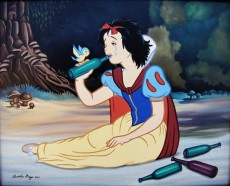 One of your pieces was brought to public attention in 2012 when Liberty Ross referenced it in a tweet about Kirsten Stewart and her ex-husband. In what other intentional as well as coincidental ways do tabloid culture and your work interact or inform one another?
One of your pieces was brought to public attention in 2012 when Liberty Ross referenced it in a tweet about Kirsten Stewart and her ex-husband. In what other intentional as well as coincidental ways do tabloid culture and your work interact or inform one another?
Regarding Liberty Ross, it was an unexpected occurrence that happened a few days before my show Disasterland. I started receiving messages from a lot of people, though I think I was the last to know. Afterward, some celebrities published images of my work. Katy 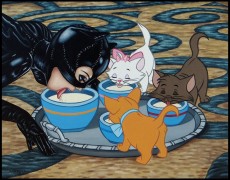 Perry published a link via Twitter to familiarize her followers with my work. Perez Hilton, Marina and the Diamonds and The Veronicas did the same. I thank everyone, famous or not, who takes the time to see my paintings. In the end, what we want as artists is to communicate through our work. I create art because there is a need inside to express my perception of things, because I very much enjoy the process of creation. However, my work is not created with the media in mind.
Perry published a link via Twitter to familiarize her followers with my work. Perez Hilton, Marina and the Diamonds and The Veronicas did the same. I thank everyone, famous or not, who takes the time to see my paintings. In the end, what we want as artists is to communicate through our work. I create art because there is a need inside to express my perception of things, because I very much enjoy the process of creation. However, my work is not created with the media in mind.
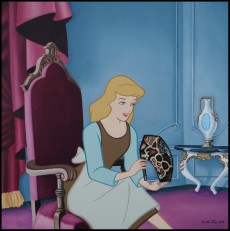 And, what are you communicating through your art?
And, what are you communicating through your art?
My work is a portrait of our contemporary society, a barometer to measure the level of tolerance towards certain taboo subjects. On the other hand, it is a constant tribute to pop culture, fashion, movies, music, animation, etc. This fusion has allowed me to expose the fragility of as well as our social vulnerability to prejudices and to our society’s double-morality.
How do you answer inevitable questions about whether your work either vindicates or condemns popular culture?
What I propose is a new form of observing pop culture; an alternative scenario. I don’t to condemn it. Popular characters become a vehicle to communicate my ideas. It may seem paradoxical, but my work is a constant tribute to pop culture – through parody.
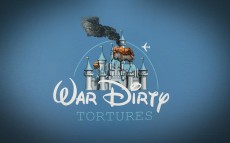 What are you working on currently? Any shows you’d like to make our audience aware of?
What are you working on currently? Any shows you’d like to make our audience aware of?
Currently, I’m working on a solo show that I’ll present this summer in Los Angeles, California.
-Larissa Zaharuk
To View more of Ontivero’s work: https://www.facebook.com/ARTRodolfoLoaiza.O

